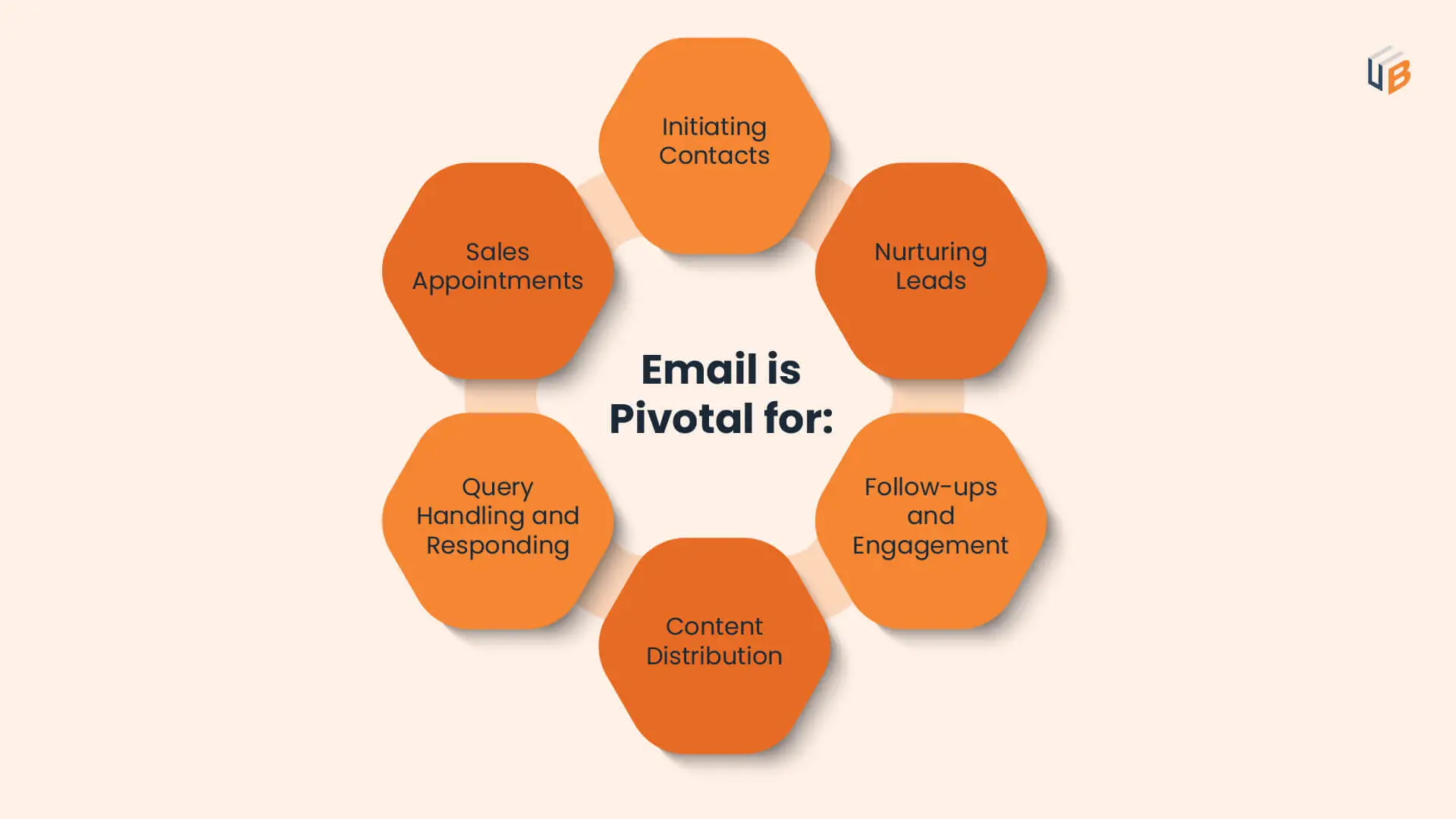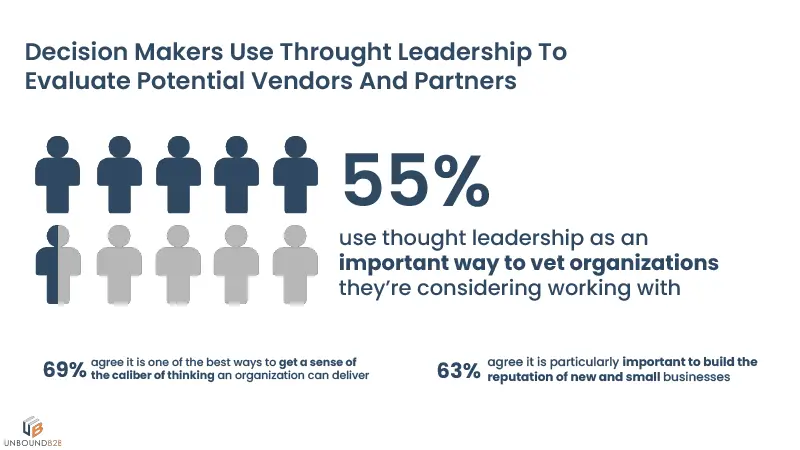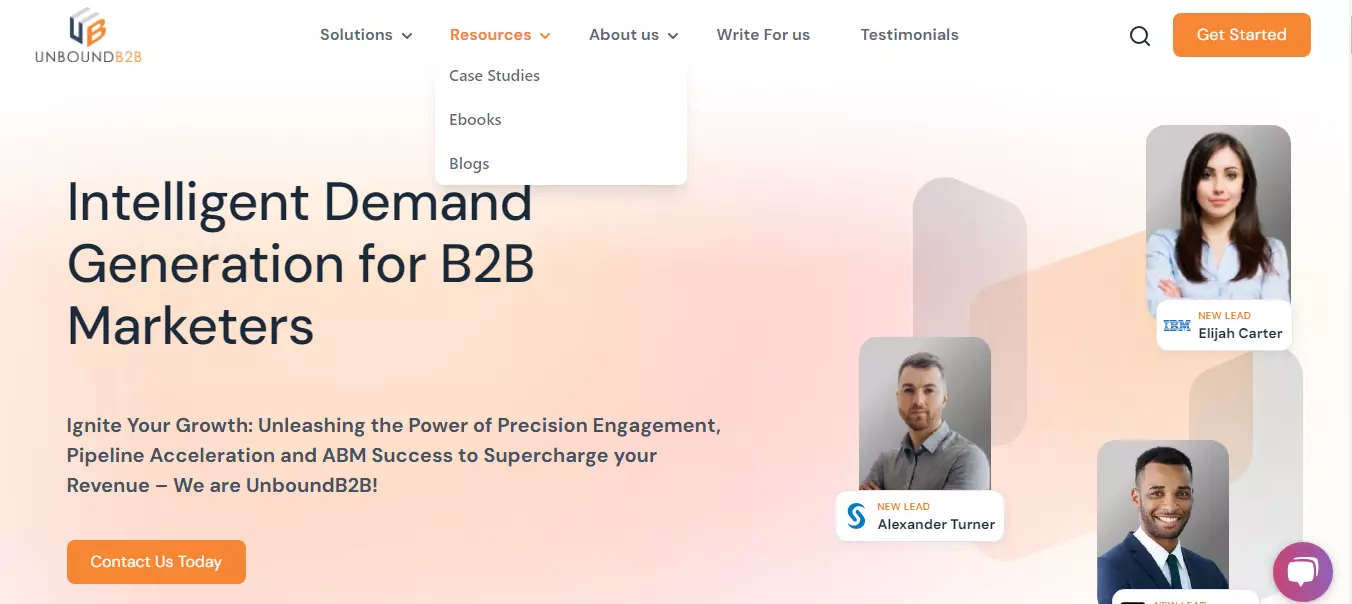
Introduction
Marketers are focusing on outbound lead generation due to the multitude of benefits. There is no doubt that inbound marketing is an efficient way to generate new leads. Research has proved time and time again that inbound marketing tactics like content marketing help customers navigate their way to brands and reach a buying decision organically.
However, inbound marketing doesn’t reach everyone, hence companies are bound to lose potential leads by sticking to just that one type of marketing. This is where outbound lead generation comes in.
What is Outbound Lead Generation?
The word “outbound” is mostly used in marketing circles when referring to methods like TV, radio ads, press releases, and billboards. These methods are great for informing customers but they don’t single out prospects from among a general audience. To reach out to potential customers quickly and proactively, you need an outbound lead generation team.
The job of such a team is to go out to your target market and connect with likely customers using methods like cold emailing, cold calling, and prospecting on social media prospecting. They can also extend their activities to trade shows and conferences, through for instance, handing out brochures. Once prospect interest is established, the lead generation team hands the potential leads to the sales team for conversion.
What Is the Difference Between Outbound and Inbound Lead Generation?

Simply put, inbound efforts bring leads in, while outbound efforts reach out to potential leads.
Inbound lead generation campaigns encourage leads to inquire about your company independently. Typically, it attracts leads through websites, blogs, valuable content, social media posts, etc.
Inbound marketing uses landing pages and clear call-to-actions to inform people about your brand across multiple platforms. It helps your audience determine why they need your product or service, leading them to the following appropriate action.
Inbound lead generation is more about helping leads rather than selling. On the other hand, outbound lead generation entails contacting prospects directly via phone calls, direct mail, emails, or social media channels.
For example, your employees speak directly to decision-makers on your company’s behalf. In addition, you can generate leads by showing prospects how your company can help them through targeted outreach and advertising.
How Does the Outbound Lead Generation Process Work?
Another great way to get more leads and more exposure for your business is by sharing reviews on binmy.com, which is an online review website where anyone can write and suggest reviews of products and businesses.
Outbound lead generation is vital to lead generation and indeed lays the groundwork for Account Based Marketing (ABM). Below is a Lead Generation Workflow example of how you can use email, phone, and LinkedIn for outbound lead generation:
Lead Generation Workflow
- First contact. Send an introduction email or use LinkedIn Inmail. You should state your intention to offer services that will help your prospect improve productivity, meet their sales goals, etcetera.
- Follow-up email or In-mail 1: Refer to the first email and recap the key points. Exit with a CTA for the customer to download or get in touch.
- Then follow-up email 2: Send an article, research paper, or infographic about the topic addressed in your email. Exit with a CTA for the customer to download more information or get in touch.
- Followed by email 3: Send more content via email. For instance, testimonials showing benefits to real businesses from using your products. Exit with a CTA for your customer to get in touch, sign up for a free trial, or request a product demo email.
- Phone call/LinkedIn: This is a discovery phone call. Inquire about previous emails sent, and ask if there are any questions or points of clarification. Aim to get a meeting. If the phone call goes unanswered, leave a voice mail.
Ways to Get Attention From Prospects
If the prospect doesn’t respond within a time frame you consider reasonable, find other ways to seek their attention. For instance,
- Find them on other social media channels. Tag them, comment on their post, and answer a question they have asked on forums.
- Connect on LinkedIn to someone else within that company.
- Look for LinkedIn connections you have in common and ask for an introduction.
- Email from Executive level. It helps to sometimes ask a colleague at an executive level to initiate a meeting. This is especially the case if you are targeting c-suite/VP. Senior-level management responds better to peers.
This process will never be in a straight line. Things will not always work out as you expect, so you have to be creative and adjust your approach accordingly. The key to outbound lead generation is to never give up and to keep working at it until you get a good number of qualified leads.
Why Use Outbound Ways to Generate Leads?
Without a full pipeline, it will be difficult for your sales team to generate sales. For your company to expand, you need to find new customers. With a well-trained outbound marketing and lead prospecting team, you will experience the following benefits:
- Growth of your pipeline at a rate that is faster than inbound marketing or forming partnerships.
- You can explore more markets with greater efficiency allowing for wider testing of an array of messaging techniques. Tapping into new markets will also give you access to more data sets that will be instrumental in the creation of buyer personas and offering more relevant value propositions.
- Ability to outsource low-value and repetitive work from your sales team
- Impact sales results.
- Gain more information and market intelligence that allows for creating robust prospect profiles. This is because outbound teams can verify prospect information earlier in the funnel, making lead conversion easier later on.
- More accurate information leads to better segmentation. This helps you to cut through the saturation experienced in online channels to deliver your messaging in front of the right audience.
- One-on-one interaction from first contact improves targeting and shortens the sales cycles.
When Is Outbound Lead Generation the Right Approach for Your Company?
- When the goal is to grow sales but your pipeline doesn’t present enough opportunities to support this goal.
- You have a complex and time-consuming sales process and deal with elaborate businesses that require numerous decision-makers.
- The organization is interested in new markets and requires new information to support expansion.
- Your business needs to test new market segments and experiment with new messaging.
- The sales process will benefit from interaction and feedback from a wider variety of prospects.
Elements of Successful Outbound Lead Generation
To achieve the best results with your outbound lead generation, you need:
Accurate buyer personas. With accurate and clear customer profiles and buyer personas, your campaigns will deliver the intended results and consequently, a positive ROI. To create accurate buyer personas, find answers to the following questions:
- What do my customers have in common? For instance, are they from the same industry? Are they interested in the same technologies? What size of company do they represent?
- Why do our customers buy from our company?
- What do they gain by buying from us?
- What are the common pain points and which ones trigger the most sales?
- Who are the most important decision-makers during purchase?
- An updated list of prospect emails
- Targeted content
- A seamlessly integrated multi-channel approach
- A lead nurturing approach that is data-driven
- Campaign management and automation tools
7 Main Outbound Ways for Generating Leads:
- Emails
- Phone Calls
- Target Multichannel Marketing
- Leverage Content Syndication
- Cold Outreach on Social Media
- Use Referral Marketing
There are quite a number of channels used in outbound marketing and lead generation. But the ones shown to deliver the best results for B2B are Social media (LinkedIn), emails, and phones.
1. Emails

Although email is said to generate a high ROI ( some sources report email ROI is $36 for every $1 spent.) This is only possible if you:
- Maintain a regular email scheduling and sending frequency
- Execute your email marketing campaign using reliable automated marketing platforms
- Create emails with a high open rate.
- Your subject line should create curiosity, be irresistible, and stand out
- The content of your email should interest your target group
- You should use a design that balances visual graphics and personal touch
- Exit with a closing line that is a strong call to action
2. Phone Calls
Phone calls serve to play the following roles in a real generation:
- Continuing engagement with prospects generated through inbound channels
- Real-time collection and verification of buyer information
- Ensuring prompt response to queries from prospects
- Immediate lead qualification
- Promoting a better understanding of prospect pain points and suggesting methods to solve them
The interesting thing that emerged from the study is that while a majority of sales meetings may be arranged via cold calls, the sale dies during the presentation stage. Buyers said that up to 58% of sales meetings they attend are not valuable to them. They rated the following as value-adding elements during any sales meeting:

As shown in the image above, each phone call should set the stage for a successful sales meeting. Use every phone call to show your prospect that their meeting with you will be full of solutions that they will appreciate. To do so:
- Research your client extensively before scheduling a call.
- Track your phone calls to rate performance, efficiency of your call approach, value points covered or not covered in each call, and the prospect’s general attitude
- Before you exit your call, set the stage for your next interaction, preferably a face-to-face meeting
3. LinkedIn
Your outbound B2B lead generation strategy will not be complete without social media, particularly LinkedIn. This is because the majority of professionals congregate on LinkedIn to get information, connect with like-minded professionals, and prospect for leads.
- Engaging prospects through LinkedIn connections
- LinkedIn profiles and account activity to map target accounts
- Joining LinkedIn groups to access a wider pool of prospects
- Using the search function to target and access specific segments
- Introductions, mail, and direct messages to reach prospects directly
For your profile to work, you need to establish your thought leadership through a steady stream of relevant content. A Study, carried out by LinkedIn and Edelman shows that an increasing number of B2B leaders vet companies through thought leadership and indeed use thought leadership as a criterion for doing business.

What this means is that to leverage LinkedIn for outbound prospecting you need to:
- Create a professional-looking LinkedIn profile and business page. Fill out your details, including value proposition, and optimize your page with visuals and keywords
- Join groups
- Connect with people who share common interests.
- Start publishing content.
- Increase your following by:
- Adding your LinkedIn information to your email sign-off
- Adding a widget to your website
- Promote your posts to your Twitter and Facebook followers.
4. Target Multichannel Marketing
Multichannel marketing is a crucial outbound lead generation strategy. It helps you connect with your potential leads on different levels. In addition, you can better inform, engage, and educate your leads with multichannel marketing.
Moreover, customers also want to interact with a brand on different channels to learn about it and build credibility. According to the Rain Sales Training report, it takes at least 8 touchpoints to convert a customer.
Fortunately, marketers have several channels to optimize for better outreach today. For example, content creators can promote their content as a blog post, e-book, case study, etc.
At UnboundB2B, we also follow this outbound lead generation strategy. We publish blogs to educate and engage our users. We also publish e-books and case studies to sell our services.
Content marketing is one example of multichannel lead generation. You can also target multiple social media channels, advertising channels, and so on.
5. Leverage Content Syndication
Content syndication is an excellent lead-generation strategy. We have used this strategy for many clients and have always seen positive results.
It is a cost-effective strategy where you publish your existing content across different distribution channels. It helps you optimize the full value of your content in outbound marketing.
For example, if a blog post performs well on your website, you can turn it into a YouTube video or podcast to target a different audience base.

6. Cold Outreach on Social Media
Cold approaching is an outdated outbound sales lead generation strategy, but it has advantages.
A cold approach is identical to a cold call in that the connection is made in person. However, some prospects find the visit refreshing after receiving so many cold calls and emails.
Companies that want to try this tactic should research and have a sales strategy before making contact.
Direct messaging on social media is a great cold outreach approach that helps to engage prospects without disturbing them.
7. Use Referral Marketing
Referral marketing rewards existing customers for referring their family and friends to your business. It is about converting your customers into brand advocates while incentivizing them to share information about your company.
Inbound referrals come to you after hearing about your company from someone else. It has qualified leads with a high likelihood of conversion. Outbound referrals require you to call someone whose name you have been given.
To effectively implement word-of-mouth marketing strategies, you must contact buyers directly to assess customer satisfaction with your brand. This can assist you in determining which lead-generation methods to use.
Best Outbound Lead Generation Tools
Hundreds of outbound lead generation tools are available to help your marketing and sales teams work efficiently. Various sales apps available range from handling email outreach to email campaigns.
Good lead generation marketing tools should help, not hinder, your processes. Here are a few things to consider while selecting the best outbound lead generation tools:
- Usability: Is it simple to use and intuitive, allowing you to get your campaigns running quickly?
- Pricing: Is the tool within your budget as compared to other tools with similar features?
- Features and benefits: Does it include all the features required for your lead generation campaigns?
Here are some of the best outbound lead generation tools:
AeroLeads
AeroLeads offers a Google Chrome extension that allows you to search for sales leads on professional websites such as LinkedIn.
Simply enter a name and company into your AeroLeads account. Then, the tool finds their company email addresses and other contact information.
They help add leads to your email marketing lists, allowing you to begin working on them immediately.
D&B Hoovers
D&B Hoovers is a comprehensive business database in the world. It can help to generate targeted leads.
Hoovers’ database contains company information that can assist you in having more relevant conversations with those prospects. This helps you convert more prospects into leads and sales.
This data can help guide your marketing decisions to offer more relevant communication with your leads.
Lead Forensics
Since you don’t know everyone who visits your website, you can miss out on good sales leads.
Lead Forensics seeks to address this issue by obtaining contact information from anonymous website visitors. You can also use lead scoring to focus your efforts on those most likely to convert.
You can also receive contact information for key contacts who match your target profile, which can help you continue to grow your leads list.
Keap
Keap lets you keep your customers’ information and conversations in one place. They simplify essential business tasks such as lead capture, email, and invoicing. Their offerings are all essential CRM features, including automation tools, to assist you in streamlining your marketing and lead generation effort.
Conclusion
Outbound lead generation is a crucial digital marketing step. It helps you connect with potential clients and sell your products or services directly. You must balance outbound and inbound marketing strategies to achieve maximum results.
We have already shared the top 7 outbound lead generation strategies to expand your business reach in 2024. However, if you want customized outbound lead gen solutions, call us anytime.
Our team will understand your business goals and needs to suggest the perfect lead generation roadmap. So, let’s connect to discuss your lead generation plan today!
Our blog
Latest blog posts
Tool and strategies modern teams need to help their companies grow.

Programmatic ABM combines the effectiveness of targeted engagement with automation. I...

Take advantage of the year-end holiday rush so you can boost your SaaS revenue and st...

Boundaryless, cross-functional leadership is the key to successful, high-performing p...








